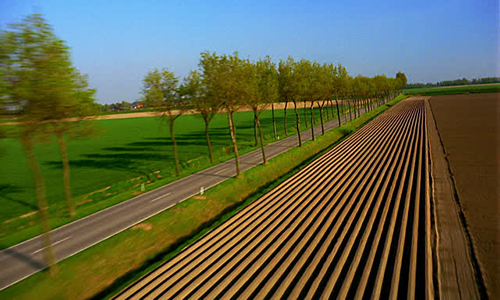Soil and nutrient loss and runoff from agricultural fields are major problems environmentally and economically in the U.S. and globally. After heavy spring rains, soil and water runoff containing fertilizer and pesticides is washed downstream, carrying the sediment and chemicals to the Gulf of Mexico. This process creates a large oxygen-starved area which is toxic to aquatic organisms and damages the commercial fishing and tourism industries. Tree-based buffers are an effective method for preventing runoff, however, they can negatively affect crop yields. Based on years of research, University of Missouri scientists suggest farmers use buffers between crops and trees; this technique reduces soil runoff and maintains good growing conditions, creating economic benefits for farmers and, ultimately, for society in general.
“It is clear that tree-based buffers are an effective method to prevent soil runoff and can be an important strategy to protect farmland and downstream ecology and water quality,” lead researcher Ranjith Udawatta said. “Finding the best ways to use tree buffers effectively while still maintaining high crop yields is imperative for the long-term success of the agricultural economy.”
For their most recent study, Udawatta, an associate research professor in the MU College of Agriculture, Food, and Natural Resources and the MU Center for Agroforestry, led a team of researchers who tested different strategies for preventing soil runoff. These strategies featured different combinations of crops, trees, buffer zones where tree roots were cut to prevent expansion into the crop areas, and sections of Conservation Reserve Program (CRP) land. CRP is a federal program that encourages farmers to convert highly erodible cropland and other environmentally sensitive acreage to vegetative cover, such as native grasses, wildlife plantings, trees, filter strips, or riparian buffers.
The researchers found that the most effective tactic was to utilize CRP strategically to create buffers between the trees and crops depending on the size of the trees. For example, for trees 20 feet high, Udawatta recommends a buffer of CRP land at least six to nine feet wide before planting corn.
“We found tree buffers along streams and waterways hurt crop growth in two ways,” Udawatta said. “The shade from the tall trees prevents sunlight from reaching the crops, and the trees win the competition for water, as their roots reach much wider and deeper. Cutting the tree roots alone doesn’t work, as the shade from the trees still reduces crop yields adjacent to the trees.”
Although being planted next to trees reduces corn yields, Udawatta did find that soybeans seemed unaffected by the trees. He suggests farmers plant soybeans next to tree buffers if they do not have enough land to plant into CRP.
The study, “Yield Differences Influenced by Distance from Riparian Buffers and Conservation Reserve Program,” was coauthored by Clark Gantzer, Tim Reinbott, Ray Wright, and Robert Pierce II and was published in Agronomy Journal in 2016.







